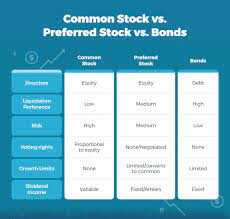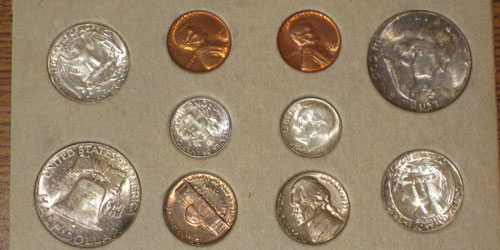Compare and Discuss: Preferred vs. Common Stock
Feb 06, 2024 By Triston Martin
Introduction
Common stock and preferred stock are the two basic forms of equities that can be offered for sale to investors and then traded among the investors themselves on the open market. Owners of each different kind of stock hold a proportional share in the overall business. There are some parallels between preferred and common stock, but there are also important distinctions, such as the level of risk that comes with ownership. Prevalent stock is the most common type of stock. You should become familiar with the pros and downsides of each type of stock before investing in either one of the two types of stocks available
.
Common stock, as opposed to preferred stock, represents an offering or share in the possession or ownership position of the organization. It entitles the holder to receive the benefit or profit share designated as a dividend and the right to cast a vote and participate in the organization's annual general meetings. Preferred stock, on the other hand, does not represent an offering or share in the possession or ownership position of the organization. Preferred stockholders are accorded preferential treatment compared to regular or common stockholders. As a result, preferred stockholders are among the first to receive dividends and other capital appreciation. Even though shareholders do not have voting rights, in the event of a liquidation, their claims are paid out ahead of normal shareholders and investors.
Common stock is typically meant when people talk about "stocks" at this point. By utilizing this strategy, investors cannot only generate a profit or receive a dividend but also liquidate their stock holdings at a price greater than their ask price. Investors who purchase common stock are granted the opportunity to vote on key issues and emergencies affecting the corporation.

Common Stock
Frequent stock is the most common type of stock issued to shareholders by a company. It gives the holder the ability to earn dividends from the firm and to take part in any appreciation that may occur in the price of the company's stock. Voting rights for common stock shareholders normally correlate to the number of shares the shareholder holds. The board of directors holds the ultimate control over dividend policy, which includes the capacity to decide whether or not dividends will be distributed and the number of dividends that will be paid out. Changes in dividend amounts can be brought about by earnings, which in turn are influenced by the economic, market, and political developments. Most of the time, dividends are unstable and may be decreased or cancelled entirely.
The fundamental allure of holding common stock is the opportunity to own a portion of the entire business. A firm's stock price can skyrocket as the company grows and becomes more profitable. As a consequence of this, there is the possibility that financiers will make enormous gains as a result of this.
Preferred Stock
While preferred stock carries a lower level of risk than common stock, the return on investment for the former is lower. Preferred stockholders have a higher priority claim on the firm's assets than common shareholders. Still, common shareholders are the ones that have a say in how the company is operated. The issuing business is granted the right to repurchase shares of callable preferred stock from holders at any time and for any cause, often at a discount. Because of these three distinguishable advantages, preferred stock is given its name.
Priority is given to preferred stockholders regarding the distribution of dividends compared to common stockholders. Those who own preferred shares of a company's stock are entitled to a dividend greater than the one paid to owners of common stock or bonds (very compelling with low-interest rates). If a firm declares bankruptcy, those who possess preferred stock will be repaid first, followed by those who hold common stock.
Differences: Common vs Preferred Shares
Below we have discussed and compared Preferred vs. Common Stock:
1. Company ownership
The owners of the company's common stock and preferred shares collectively own the business.
2. Voting rights
The common shareholders hold 100% of the business's ownership and are also the sole shareholders eligible to vote in company matters. Preferred shareholders are not given any voting rights in the company.
3. Dividends
Both owners are eligible to receive possible benefits from dividends, even though they are distributed in two unique ways. Dividends on common stock are paid out at the board of directors' discretion and are calculated based on how well the firm is doing financially.
4. Claim to earnings
Following the publication of a company's financial results, the profits are parcelled out among the company's stockholders in a predetermined sequence. When distributing dividends, it is customary to make payments to bondholders first, followed by payments to common shareholders. Due to the hybrid character of preferred shares, preferred stockholders receive payouts after bondholders but before common stockholders. Common stockholders receive distributions in the reverse order.
5. Conversion
In contrast to common shares, preferred shares can be converted into a set number of common shares at any time.
6. Returns
The common and preferred shares will ultimately be reimbursed from the company's profits. Generally speaking, the increase and fall of the stock price are directly connected to the return on common shares.
Common stock
Gives the recipient the right to vote. There is no upper limit on the price of the stock. Gains on investments are not liable for taxation until the stock in question is sold.
Cost fluctuations are greater. Include the possibility that there will be no dividends. When it comes to the distribution of dividends to stockholders, preferred shareholders are given precedence over regular stockholders. Payouts from liquidation come in behind preferred shares in terms of priority.

Preferred stock
Given a dividend that is, in most cases, greater than what is paid out on common shares. Decreased likelihood of price erosion. Dividends are paid out first to preferred stock, and precedence is given to preferred stock in the case of a liquidation.
There is a limit on how high the price of a share of stock can go before it hits its redemption price. In many cases, people are denied the right to vote.
Conclusion
One of the most significant differences between common stock and preferred stock is that the former does not confer voting rights on its stockholders while the latter does. Regarding the distribution of dividends, preferred shareholders are compensated first, followed by common shareholders in the order in which they were initially paid out. Only after creditors, bondholders, and preferred shareholders have been compensated can dividends and other distributions be made to common shareholders.
-
 Investment Nov 02, 2023
Investment Nov 02, 2023Get to Know Does Car Insurance Cover Hitting a Deer
Each insurance coverage pays for different types of claims. Having the right coverage, you may be able to get your car fixed if it gets damaged in a collision with a deer.
-
 Taxes Mar 22, 2024
Taxes Mar 22, 2024The Essential Guide to Withholding Allowances on Your Form W-4
Discover the crucial aspects of managing Form W-4 withholding allowances to optimize your tax situation, avoid penalties, and maximize benefits.
-
 Banking Nov 05, 2023
Banking Nov 05, 2023What is CDIC?
CDIC protects Canadians' financial assets. If the financial institution you bank with is a member of the CDIC and it collapses, the CDIC will pay up to $100,000 per account, which includes both the principle and the interest.
-
 Investment Nov 10, 2023
Investment Nov 10, 2023Best Online Gold Dealers in 2022
Our picks for the best gold dealers are JM Bullion, Provident Metals, Golden Eagle Coins, America Precious Metals Exchange, and Money Metals Exchange.
